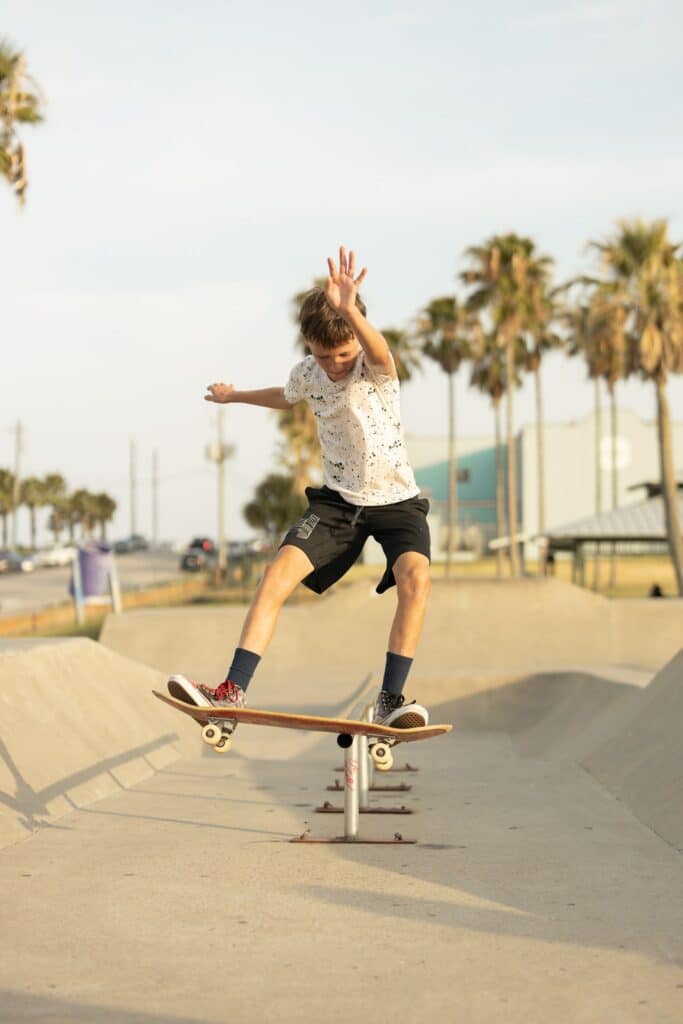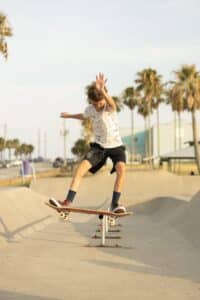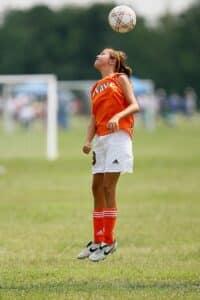Treating and Avoiding Kid’s Concussions

With school starting once again, sports season upon us. This means at our medical practice we see a lot about of kids with concussions. It also means that both students and parents should be hyper aware of head injuries and the best ways to avoid treat (and avoid) these types of injuries.
For concussions, parents are generally advised to monitor their child’s condition and limit their physical activities until they’re symptom-free. In more severe cases, a conventional doctor may order a computerized tomography (CT scan) and neuropsychological testing. If the doctor does not do a thorough neurologic exam and the CT is negative, many parents and kids are unaware that there still may be a head injury or of the severity of even a mild traumatic brain injury. Even if those tests reveal problems, medical treatment options are limited. That’s unfortunate, because concussion can lead to long-term health conditions for your child that impact far more than just the brain.
The good news is that treatment options are available to keep the damage from getting worse and, in some cases, even reverse it. In order for that to happen, it is vital to mitigate the inflammatory cascade and foster neurogenesis and repair. At Regenerative Healthcare, we specialize in this type of care.
Childhood Concussions are Different Than Adults

The first thing to remember is that children are not small adults when it comes to concussions and mild-traumatic brain injuries. No matter your experience with this type of injury as an adult, there are very specific treatments that must be followed. Here is what we know:
- The symptoms of concussion for a child are not the same as an adult. A child often exhibits brain-blood flow issues, while adults see damage to nerve cells or chemical abnormalities. Some children may have a decrease in blood flow, others an increase in blood flow – no child is the same.
- Children and teens need age specific treatments for concussions.
- The changes in a child’s brain from concussion may outlast often outlast symptoms. For instance, some children may pass neurological testing but an MRI still shows problems. This means some children may be returning to normal activities and sports too soon.
- Children may have a serious relapse of symptoms, called a second-impact syndrome, if they experience another head injury soon after the other.
- Teachers, coaches and all adults in the child’s life need to understand that the process for healing and recovery takes a great deal of time. Accommodations will be necessary for school work, after-school activities and sports.
At Regenerative Healthcare, we have experience with children’s concussions and TBIs, which means we have knowledge to help treat your child. Our recovery process includes six stages for at home and school (see the attached guidance). As mentioned, each child or teen will heal at their own pace with our assistance. This can be a frustrating process for both parent and child, but we know how the brain works.
Help your Child Avoid Head Injury

- Help kids and teens understand that even small head injuries can be detrimental to health. Most Emergency Rooms do not see patients how have been knocked out cold. Smaller, more subtle injuries can go unnoticed. Impress upon your children to advocate for themselves and honest with you and coaches about head injuries (no matter how small).
- Players should always be removed from the game for proper evaluation if a suspected head injury occurs.
- Always wear safety equipment – helmets, pads etc. Make sure all safety sports equipment is fitted properly. Hand me downs are attractively inexpensive, but it they don’t fit, don’t use them.
- In soccer, kids under 10 should not head the ball, ever. Kids ages 11-13 should only head the ball during practice, not during games. Lead with the trunk and pull from the core. Communicate with other players to prevent head-to-head injuries. Make contact with the ball in the “sweet spot” of the forehead—slightly beneath the hairline in the middle.
- Head injury can occur with any sport or any outdoor activity so teach all kids about head injury.
- Make sure your kids are taught safe tackling techniques in football to make contact with the front part of the shoulder, head up with proper hip placement. See the video below from coach from the Detroit Lions football team.
Restoration Healthcare is a Southern California medica clinic that partners with our patients to discover and treat root malfunctions that lead to chronic illness. We help people live long and healthy lives. Unlike other medical practices where turnkey solutions to complex symptoms are prescribed, our doctors’ protocols are handcrafted and personalized with you and your most up-to-date health-related data and objectives in mind. For more information, go to rhealthc.com
PLEASE NOTE: The information in this blog post about concussion is provided for general informational purposes only and may not reflect current medical thinking or practices. No information contained in this post should be construed as medical advice from the medical staff at Restoration Healthcare, Inc., nor is this post intended to be a substitute for medical counsel on any subject matter. No reader of this post should act or refrain from acting on the basis of any information included in, or accessible through, this post without seeking the appropriate medical advice on the particular facts and circumstances at issue from a licensed medical professional in the recipient’s state, country or other appropriate licensing jurisdiction.
Resources:
Zimmerman SD, Vernau BT, Meehan WP 3rd, Master CL. Sports-Related Concussions and the Pediatric Patient. Clin Sports Med. 2021;40(1):147-158. doi:10.1016/j.csm.2020.08.010
Davis GA, Anderson V, Babl FE, et al. What is the difference in concussion management in children as compared with adults? A systematic review. Br J Sports Med. 2017;51(12):949-957. doi:10.1136/bjsports-2016-097415
Brooks BL, Low TA, Plourde V, et al. Cerebral blood flow in children and adolescents several years after concussion. Brain Inj. 2019;33(2):233-241. doi:10.1080/02699052.2018.1540798
Yang Wang, John D. West, Jessica N. Bailey, Daniel R. Westfall, Hui Xiao, Todd W. Arnold, Patrick A. Kersey, Andrew J. Saykin & Brenna C. McDonald (2015) Decreased Cerebral Blood Flow in Chronic Pediatric Mild TBI: An MRI Perfusion Study, Developmental Neuropsychology, 40:1, 40-44, DOI: 10.1080/87565641.2014.979927

